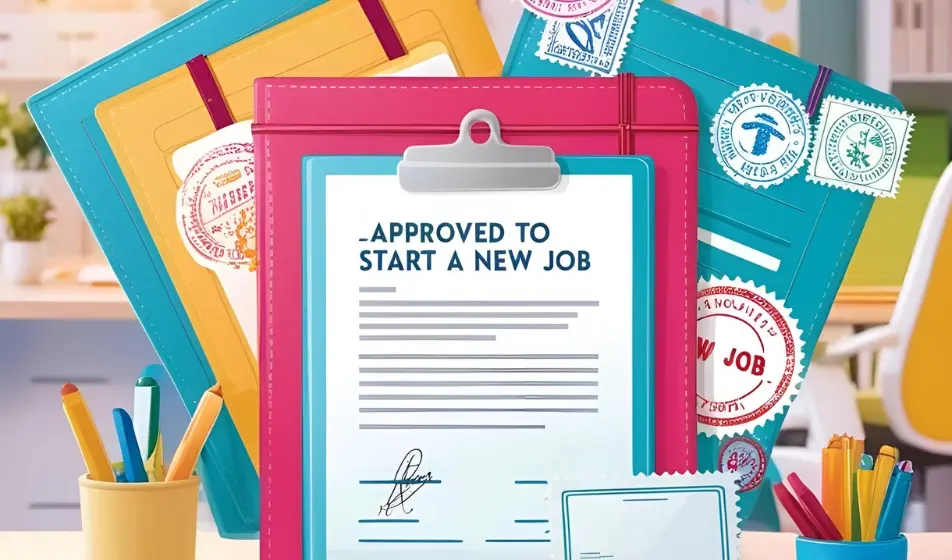Recruiting employees is a lengthy (and often expensive) process - so you want to be sure that you make new starters feel welcome and adjust well to their new roles.
Induction processes are vital to ensuring success within your SME, and how you induct new team members says a lot about your company culture.
This blog covers what an induction is as well as why onboarding new employees effectively has never been more important.
Preparing workspaces for new employees
Streamlined onboarding for your SME
Understanding induction vs. onboarding
Induction and onboarding often go hand in hand, but they’re not the same thing.
Think of induction as the first chapter: an introduction to the business, the basics of the role and what a new starter needs to get going.
Onboarding is the full story. It’s the ongoing support that helps someone feel settled, confident and ready to do their best work.
Together, they shape the early employee experience. And when done well, they set people up to thrive.
What is an induction at work?
An induction is the process a new recruit goes through to be introduced to the company and their new role. This includes not only meeting managers and colleagues, but also getting to know about the building and its layout, being trained in the use of phone and IT systems, and familiarisation with policies and procedures.
Depending on the size of your company, an initial induction could take as little as a day. However, in large organisations, there may be a more lengthy process, involving off-site or centrally-based training and perhaps a series of meetings and presentations from various parts of the organisation.
Beyond the initial days, the induction programme continues for many months, so that the new employee can fully integrate into life in the company and settle into their role.
What is employee onboarding?
Onboarding is the set of processes businesses implement to welcome and initiate new employees into an organisation, providing them with support, guidance and training. This is essential for helping them settle quickly and become happy and productive employees.
With businesses planning phased returns to work - dividing their team between the office or working from home - HR managers will need to combine online, virtual onboarding with the traditional physical face-to-face meetings and activities.
Benefits of a well-structured induction
A thoughtful induction does more than tick boxes. It helps new starters feel confident, supported and ready to succeed. Here are some of the key benefits of an effective induction programme:
-
A smoother start
When people know what to expect, they can settle in more easily and focus on getting started. -
Faster productivity
Clear guidance and early support mean new employees can contribute sooner. -
Stronger engagement
Feeling welcomed and valued from day one builds early trust and connection. -
Lower staff turnover
When people feel supported, they’re more likely to stay for the long term. -
Clearer understanding of values
A well-structured induction brings your culture to life and helps new starters understand what matters most in your business. -
Better team integration
Early introductions and support help people feel part of the team straight away.
Welcoming new starters
Whether a new employee is working from home or in the workplace in their early days with a company, it’s important to provide a warm welcome for new team members.
Arrange catch-ups with different members of their department, along with an overview of the different teams within the business. You may want to offer meetings with department heads to help your new starter get their bearings.
Introduce new employees to their manager, immediate colleagues and team members, making this as informal as possible.
If this not possible in the workplace for the time being, consider meeting in a public place - getting people together and even spending half an hour with their new colleagues can help make them feel part of the team.
Of course, many of us are now well used to communications tools such as as Zoom and Microsoft Teams but opt for physical meet-ups if possible.
Managing admin
Whether an employee is providing a manager with their ‘day one’ documents (such as signed contracts and passport details) in person or electronically via email, make sure these are stored securely and centrally.
Using a system like Breathe which includes dedicated document management functionality means you will be able to easily access employee information from anywhere.
Employees will have access to company documents and policy information, in addition to details of any training which has been arranged for them as part of their induction process.
Preparing workspaces for new employees
Making sure new starters’ desks or workstations are ready from day one and new employees are equipped with computers and smartphones is important, but now managers also need to think about home working spaces.
It’s an employer’s duty of care to ensure a new employee works safely and comfortably if, and when, they work from home.
Working hours
Actual working hours are usually very easily defined and will probably have been discussed with a new employee as part of the recruitment process. What has now changed in many companies is where people are expected to work.
Many businesses are developing phased back to work plans which limit the number of people allowed in an office at any one time. This means many people will be dividing their time between working from home and a company premises.
New employees need to know where they are expected to work. Many companies, perhaps for the first time, are setting up rotas and staggered shift patterns.
Rota, time & attendance software can help managers to create rotas and communicate them to their staff at the click of a button.
The 'buddy' system
An important part of the induction programme is to assign a “buddy” to your new employee. They can help with any practical information about the company and ensure that the staff member is at ease finding their way around in their first few days. Simple things like accompanying them at lunch for a while and giving more informal insights into the company can really help an employee to feel welcomed.
Arranging a buddy can be a useful way of making sure your new employee gets to learn the ropes. Finding out where the coffee is, where to have lunch and getting familiar with facilities are all important, but its healthy to create support for your new starter. Buddies can be a great point of contact for any questions or concerns employees might have in those anxious early days.
Introduce your company culture
Introducing a new employee to a business’ culture is key to helping them connect with their colleagues and understand company priorities and values. A company’s culture is its essence, underpinning its purpose and direction.
Maintaining cultural values among dispersed teams is undoubtedly more challenging than when people are located in a single place, but it’s important that this is not overlooked.
Do everything you can to communicate positives to new employees, introducing them to colleagues who live and breathe your cultural values as soon as possible.
Streamlined onboarding for your SME
It may sound obvious but it’s important for new starters to be clear about their objectives, providing them with a clear sense of purpose as quickly as possible.
This is essential for engagement and productivity, especially if they will be working from home and in relative solitude compared to being located alongside their colleagues.
Find out how to attract the right people to your business & onboard them successfully with our guide to recruiting & onboarding - download for free today.
Frequently asked questions
What is the importance of an induction?
An effective induction helps new starters feel welcome, informed and confident from day one. It’s not just about ticking boxes, it’s an essential part of the recruitment process. When managed well, it supports wellbeing, clarifies expectations, and helps people settle in faster.
A strong induction also supports employee engagement, encourages job satisfaction and reduces turnover. When new starters understand their role, the workplace culture and what’s expected, they’re more likely to become happy, productive employees.
What constitutes a good induction programme?
A good induction programme balances practical information with a warm welcome. It should include:
-
Structured introductions to managers, team members and other colleagues.
-
A workplace tour that covers company policies, health and safety procedures and how to use key systems or equipment.
-
Clear guidance on role expectations and initial tasks.
-
Support to complete any necessary paperwork and understand legal requirements.
-
A buddy or mentor to guide new hires through essential skills, company culture and day-to-day routines.
Don’t overlook the small touches. Regular check-ins and informal chats can make all the difference in helping new starters feel supported and at home.

Author: Aimée Brougham-Chandler
An IDM-certified Digital Copywriter (2023) & English Language & Literature graduate (BA Hons), Aimée is Breathe's Content Assistant. With 3 years' content marketing experience, Aimée has a passion for writing - and providing SME HR teams with solutions to their problems. She enjoys delving into & demystifying all things HR: from employee performance to health and wellbeing, leave to company culture & much more.





